How to grow corn salad – and get leafy greens through the lean winter months
You can get fast harvests of leaves, and multiple croppings, with this underrated plant
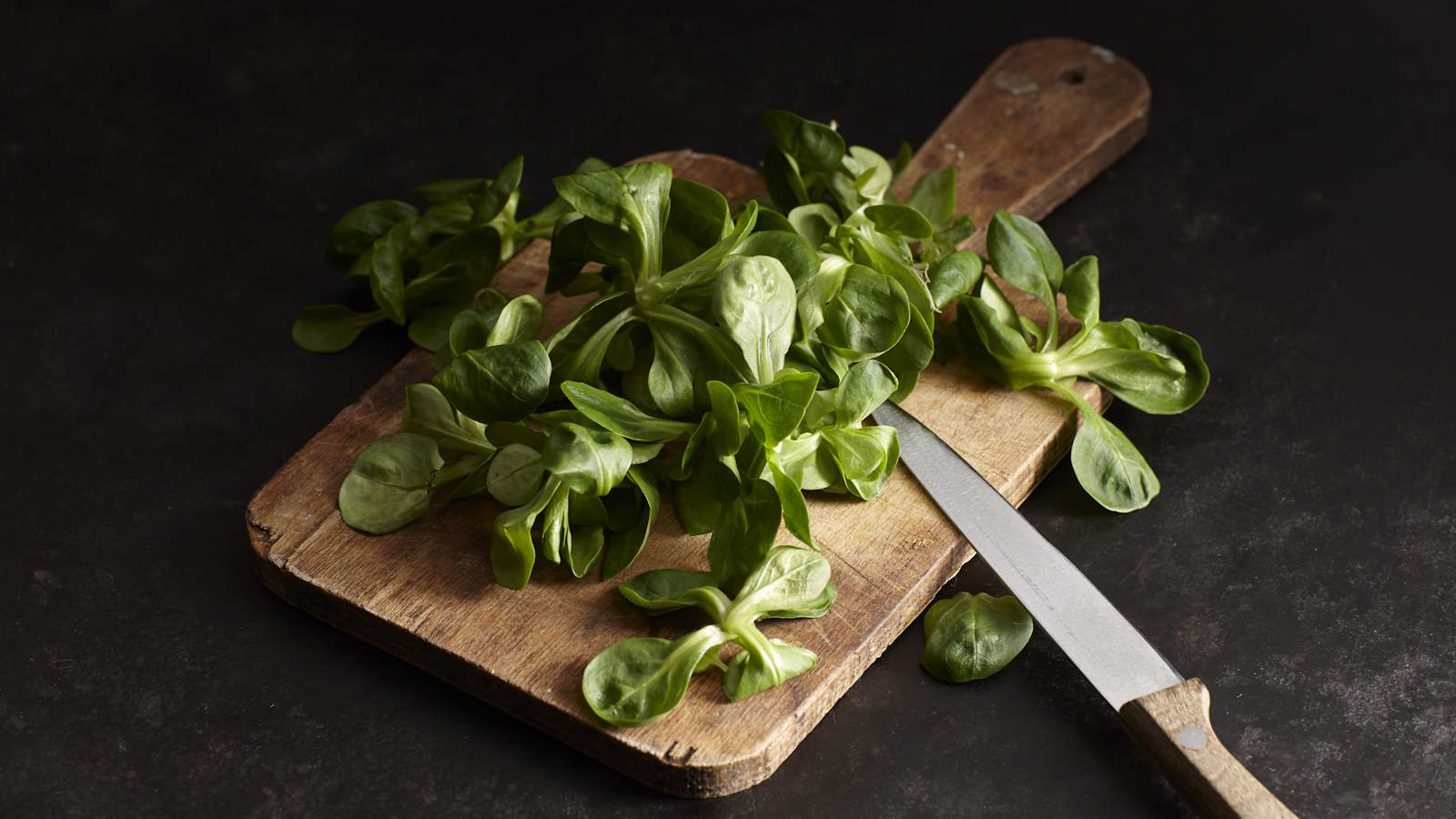

Corn salad is also known by the names lamb's lettuce and mache. It is a very easy-to-grow green, that is predominantly sown in late summer or early fall for a crop throughout winter.
They are undervalued, robust plants that are mild in flavor but vitally important for salads throughout the cold winter months.The low-growing plants quickly form rosettes of deep green leaves that have a slightly nutty taste.
If you are looking for vegetables to plant that can provide you harvests throughout winter, then corn salad should be on the list. It is easy to grow, undemanding, and can provide a long harvest as you can get multiple croppings from each plant.
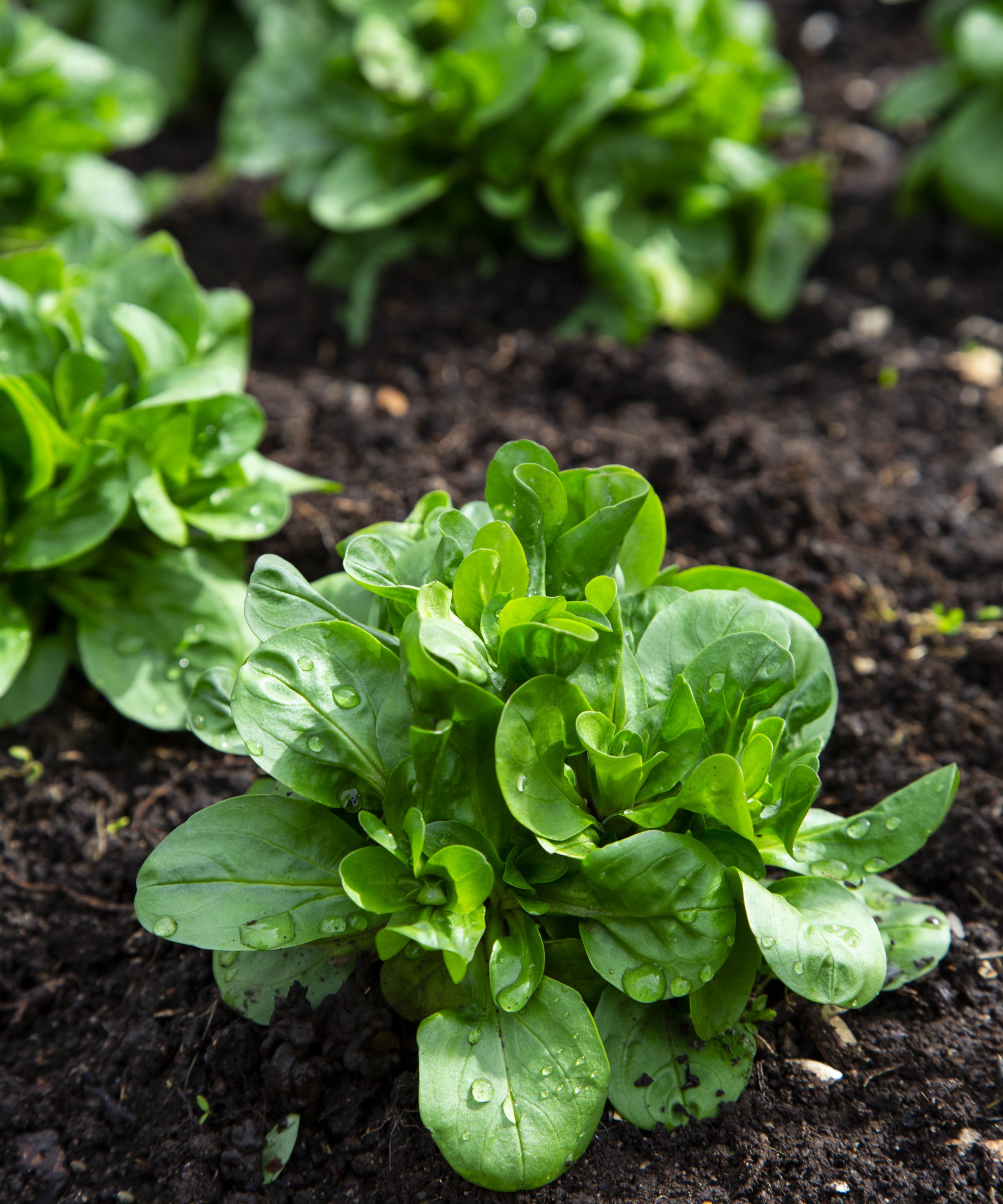
Corn salad seeds may also be labelled as lamb's lettuce or mache
Why should you grow corn salad?
Corn salad is invaluable as a leafy crop to harvest throughout the winter. When the kitchen garden dies down over winter, this low growing annual comes to the fore during the colder months. It is very hardy and can withstand frosts.
The crop is very simple to grow and a fast-growing vegetable, making it ideal for anyone looking for an easy way to start growing vegetables at home.
You can get different types of corn salad. The largest-leaved varieties are often referred to as Dutch types, while other varieties may have smaller leaves but are thought of as hardier plants. One great and quick-growing variety is Vit, available at Burpee. It is a French variety that can be ready to harvest in under 50 days. You can also find seeds of the Dutch broad-leaved variety of corn salad at True Leaf Market.
When to plant corn salad
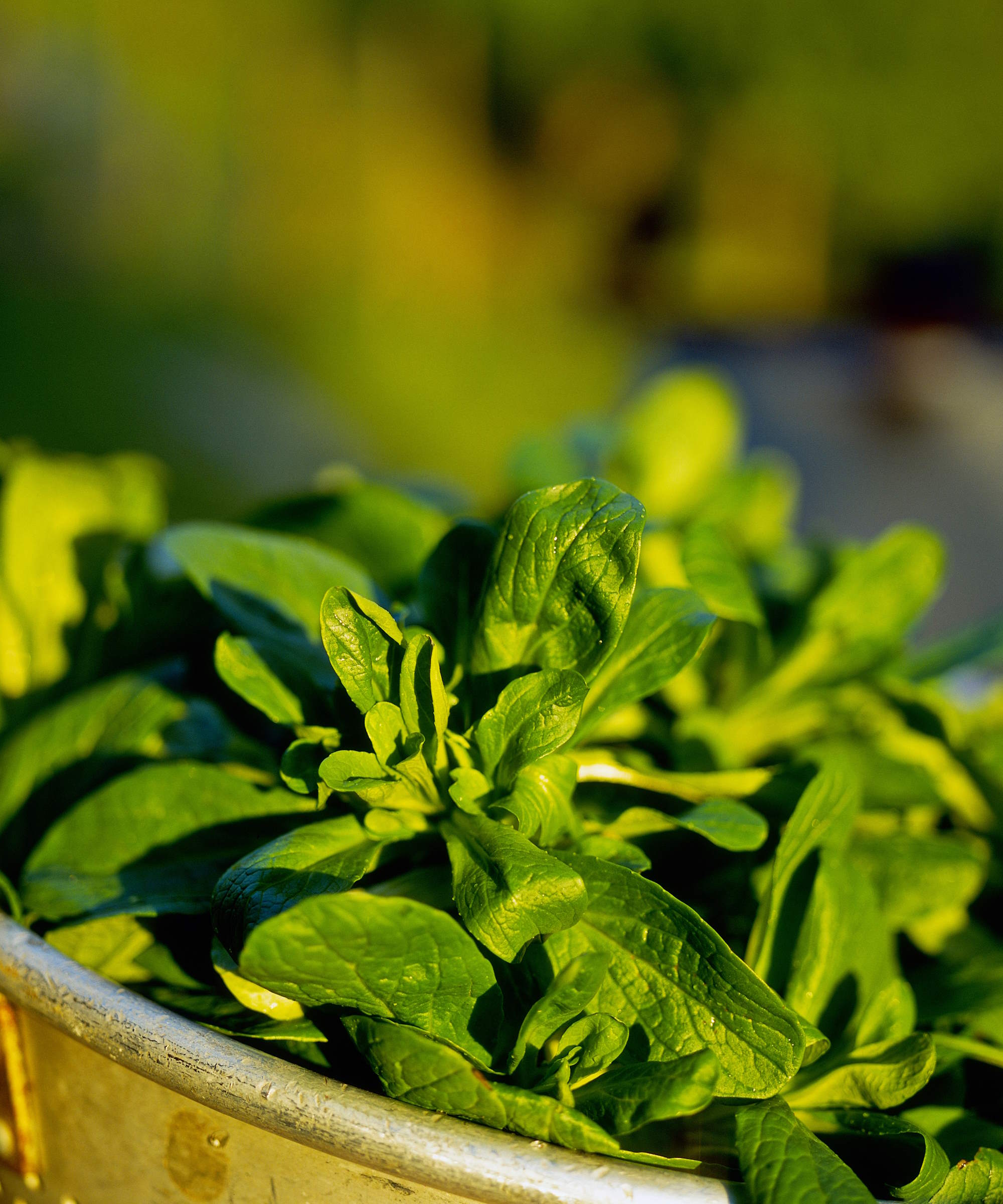
Corn salad can be picked for salads right through the winter
There are a few different times of the year that are ideal for planting corn salad. It is sown directly into the garden, rather than started in pots in a greenhouse and the seedlings are transplanted out once they have developed. The timing for planting corn salad will dictate when you get a harvest. It is best to sow in situ as the plants are small and fast-growing - you can get a first cropping within 4-6 weeks of planting the seed.
Kiersten Rankel, garden expert and botanist for the plant app Greg, recommends: ‘Get seeds established in late summer or early fall when daytime temperatures cool reliably into the 60s°F.’
Sowing in late summer or early fall will provide a harvest throughout the colder winter months. You can sow into October, either outdoors in the vegetable garden or indoors as corn salad can be an ideal vegetable to grow in a greenhouse in fall in regions with very cold winters. When growing undercover in a protected environment, such as in a greenhouse or cold frame, you can even plant in December through to late winter for a crop in late spring or early summer.
Corn salad can also be sown again in early-to-mid spring, ideally once the risk of frost has passed for your US hardiness zone. Kiersten claims that an early sowing in February under cloches can ‘jumpstart an early spring crop’. A spring sowing can provide a crop in summer, though the plants do have a tendency to bolt in warmer summer weather.

Kiersten Rankel is a certified Louisiana Master Naturalist and regularly volunteers with local community gardens and non-profits to help restore critical ecosystems along the Gulf Coast. She earned her master's degree from Tulane University in Ecology and Evolutionary Biology after her undergraduate degree in Environmental Biology, also from Tulane. In her spare time, she enjoys hiking and tending to her 150+ houseplants and vegetable garden.
Tips on growing corn salad from seed
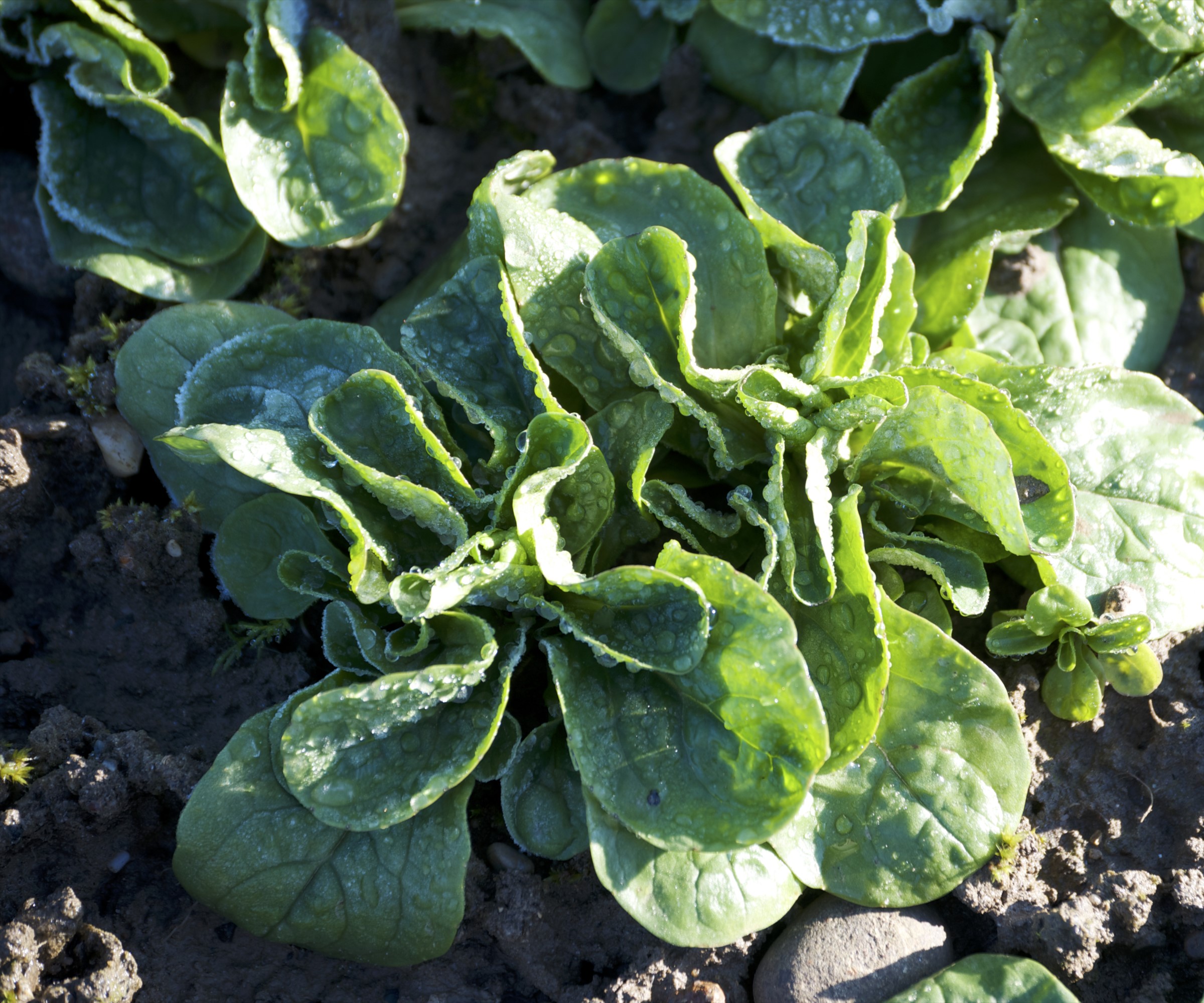
Corn salad sown in early fall can withstand the winter frosts
Corn salad is a fairly undemanding plant and it makes it ideal for many different situations in the garden. This, along with its fast-growing nature, makes it a great crop for interplanting between other crops as corn salad can grow anywhere and does not need to be rotated as part of a crop rotation plan.
Alexander Testel, from Frugal Frontier, highlights that corn salad requires ‘ample sunlight’ to grow healthily. While it does benefit from full sun during fall and spring, it also is advantageous to give the plants some protection. He adds: ‘Corn salad benefits from some shade, particularly during strong afternoon sun, and thrives in temperatures between 45-65°F.’
Corn salad is also a crop that is very adaptable when it comes to the soil. While the ideal soil type would be fertile and rich, the crop can actually also tolerate poor soil.
Kiersten Rankel recommends: ‘Corn salad needs consistently moist soil, but avoids waterlogged areas. We mix compost and a sprinkling of balanced organic fertilizer into planting beds.’ One example of a balanced organic fertilizer to use is the Dr Earth Organic & Natural Premium Gold All Purpose Plant Food, available at Walmart.
- Sow corn salad seeds on the surface of the soil, either broadcast over a prepared bed or into drills that are four inches apart.
- Cover the seeds with a very fine layer of soil and keep the surface moist, but avoid disturbing the seeds with strong jets of water. A fine rose for a watering can would be recommended.
- Germination should be quick, however you can help speed it up through the use of cloches, such as the solid and durable Tierra Kitchen Garden Cloche, available at Walmart.
- Thinning is not always required, though if it is you want to allow 4-6 inches of space between plants to allow good air circulation.
The crop can be grown in pots as part of a vegetable container garden if you do want to grow corn salad on a deck, patio, or balcony. Pick a container with drainage holes at the bottom and fill it with a good quality potting compost. Sow the seeds thinly and keep the soil moist. When watering plants in containers, they will need more regular checking and watering than plants grown in the ground.
There are not a lot of pests or diseases that regularly trouble corn salad. It might be beneficial to consider slug control methods to prevent these pests nibbling on leaves. This can include using diatomaceous earth, beer traps, or putting coffee grounds around plants - you can get diatomaceous earth at Amazon.
When the weather starts to warm in late spring, corn salad can suffer from powdery mildew. Keeping the soil moist in the summer and providing adequate air circulation can help to combat such fungal issues.

Alex Testel is an avid gardener and horticulture expert. At Frugal Frontier, his approach to gardening is anchored in eco-conscious and efficient methods. He specializes in sustainable and practical gardening solutions, empowering others to cultivate their own thriving gardens.
Harvesting corn salad
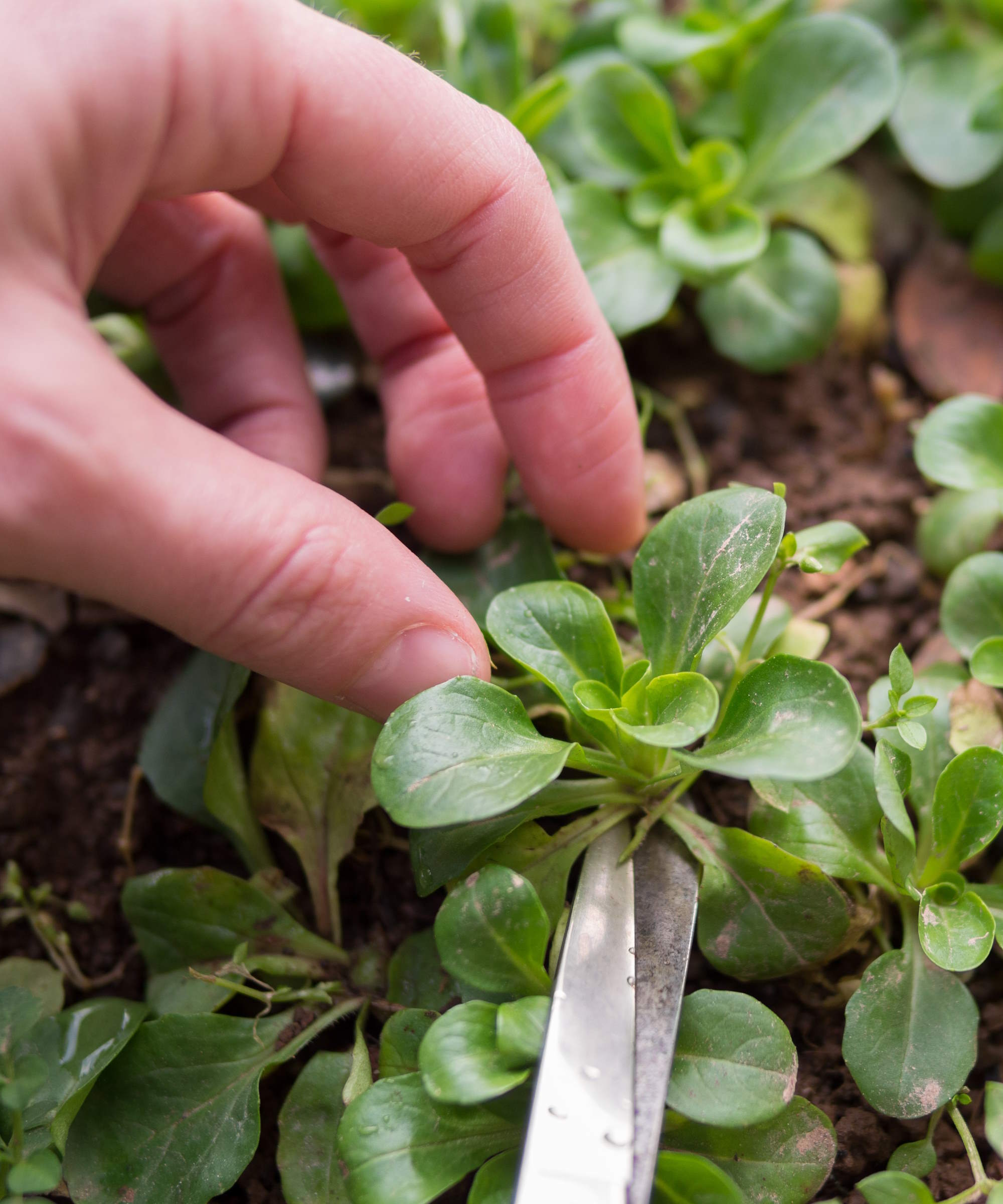
The low-growing rosettes can be harvested individually to allow the plant to continue growing
Corn salad plants grow and mature quickly, they can be harvested after around 4-6 weeks for smaller leaves and will reach maturity within 12 weeks.
The plants can either be harvested multiple times, or the whole head can be pulled up - though it will wilt quickly once lifted. Use a clean and sharp knife or pair of scissors to harvest, as this will ensure a cleaner cut and prevent spreading diseases that could affect any further growth.
Kiersten Rankel says: ‘For continual regrowth, use scissors to snip a few inches above the crown while leaving most leaves intact. Successive smaller harvests prevent bolting and keep delicious greens coming.’
Alternatively, rather than picking individual leaves as and when required, you can even cut across the entire head of the plant and it will re-sprout and grow to provide a second harvest.
FAQs
Is corn salad a perennial or annual?
Corn salad is an annual plant that completes its life cycle in one growing year. It will bolt and go to seed in warm summer temperatures. It does have a reputation as a prolific self-seeder. When the temperatures rise the plants can be removed, or some can be left to self-seed around the area if you want to grow corn salad again in the same spot.
How tall does corn salad get?
Corn salad is a very low-growing plant that tends to not grow more than 6-8 inches tall. It forms rosettes of leaves that reach around that same size in width as in height.
How long does corn salad take to grow?
Corn salad plants do grow quickly. The seeds germinate within a couple of weeks and the plant can take around 70-80 days to fully mature - though you can start harvesting even earlier. The exact time it takes to get to full size will be dependent on the growing conditions, including location, weather, and moisture levels.
Crops that can provide multiple harvests over a long period of time offer real value to a gardener, especially when the plants are grown from seed.
The likes of kale, Swiss chard, and leafy greens, such as corn salad and cut-and-come-again lettuces, can give a lot of harvests by picking leaves as and when required for your culinary uses.
Sign up to the Homes & Gardens newsletter
Design expertise in your inbox – from inspiring decorating ideas and beautiful celebrity homes to practical gardening advice and shopping round-ups.

Drew’s passion for gardening started with growing vegetables and salad in raised beds in a small urban terrace garden. He has worked as a professional gardener in historic gardens and specialises in growing vegetables, fruit, herbs, and cut flowers as a kitchen gardener. That passion for growing extends to being an allotmenteer, garden blogger, and producing how-to gardening guides for websites. Drew was shortlisted for the New Talent of the Year award at the 2023 Garden Media Guild Awards.
-
 Urban gardening ideas – 7 creative ways to grow in small spaces, balconies, containers, indoors, and more
Urban gardening ideas – 7 creative ways to grow in small spaces, balconies, containers, indoors, and moreMake the most of your space with these innovative ways to garden
By Tenielle Jordison
-
 'Sexy disco-era Italy meets Japanese farmhouse in the Brazilian jungle' was the description the interior designer gave this glass-walled modernist home
'Sexy disco-era Italy meets Japanese farmhouse in the Brazilian jungle' was the description the interior designer gave this glass-walled modernist homeOffering a warm welcome that defies its stark, modernist lines, this archictectural gem is full of surprises
By Karen Darlow